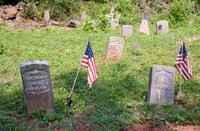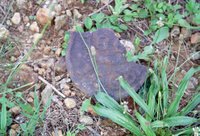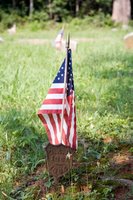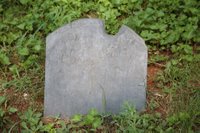 (Wikipedia) The Grand Army of the Republic (GAR) was a fraternal organization composed of veterans of the Union Army who served in the American Civil War. Founded in 1866, it was dissolved in 1956 when its last member died. Linking men through their experience of the war, the GAR became among the first organized advocacy groups in American politics, supporting voting rights for black veterans, lobbying the US Congress to establish veterans' pensions, and supporting Republican political candidates. Its peak of membership at more than 400,000 was in 1890, a high point of Civil War commemorative ceremonies. It was succeeded by the Sons of Union Veterans of the Civil War (SUVCW), composed of male descendants of Union veterans. Continued
(Wikipedia) The Grand Army of the Republic (GAR) was a fraternal organization composed of veterans of the Union Army who served in the American Civil War. Founded in 1866, it was dissolved in 1956 when its last member died. Linking men through their experience of the war, the GAR became among the first organized advocacy groups in American politics, supporting voting rights for black veterans, lobbying the US Congress to establish veterans' pensions, and supporting Republican political candidates. Its peak of membership at more than 400,000 was in 1890, a high point of Civil War commemorative ceremonies. It was succeeded by the Sons of Union Veterans of the Civil War (SUVCW), composed of male descendants of Union veterans. Continued Apr 6, 2013
The Grand Army of the Republic
 (Wikipedia) The Grand Army of the Republic (GAR) was a fraternal organization composed of veterans of the Union Army who served in the American Civil War. Founded in 1866, it was dissolved in 1956 when its last member died. Linking men through their experience of the war, the GAR became among the first organized advocacy groups in American politics, supporting voting rights for black veterans, lobbying the US Congress to establish veterans' pensions, and supporting Republican political candidates. Its peak of membership at more than 400,000 was in 1890, a high point of Civil War commemorative ceremonies. It was succeeded by the Sons of Union Veterans of the Civil War (SUVCW), composed of male descendants of Union veterans. Continued
(Wikipedia) The Grand Army of the Republic (GAR) was a fraternal organization composed of veterans of the Union Army who served in the American Civil War. Founded in 1866, it was dissolved in 1956 when its last member died. Linking men through their experience of the war, the GAR became among the first organized advocacy groups in American politics, supporting voting rights for black veterans, lobbying the US Congress to establish veterans' pensions, and supporting Republican political candidates. Its peak of membership at more than 400,000 was in 1890, a high point of Civil War commemorative ceremonies. It was succeeded by the Sons of Union Veterans of the Civil War (SUVCW), composed of male descendants of Union veterans. Continued Aug 4, 2012
George Washington, Master Mason
(LoC) On August 4, 1753, George Washington became a Master Mason, the highest rank in the Fraternity of Freemasonry, in his hometown of Fredericksburg, Virginia. The twenty-one-year-old young man would soon hold his first military commission.
Derived from the practices and rituals of the medieval guild system, freemasonry gained popularity in the eighteenth century, particularly in Great Britain. British Masons organized the first North American Chapter in 1731. Masons aroused considerable suspicion in the early American republic with their mysterious rites and closely held secrets. These fears mushroomed in response to the suspicious death in 1826 of William Morgan, who was said to have been murdered on account of his threat to reveal the secrets of freemasonry.
For George Washington, joining the Masons was a rite of passage and an expression of civic responsibility. Members were required to express their belief in a Supreme Being and in the immortality of the soul. Masons were also were expected to obey civil laws, hold a high moral standard, and practice acts of charity. Continued
May 28, 2012
Memorial Day

(LoC) In 1868, Commander in Chief John A. Logan
of the Grand Army of the Republic issued General Order Number 11 designating May
30 as a memorial day "for the purpose of strewing with flowers or otherwise
decorating the graves of comrades who died in defense of their country during
the late rebellion, and whose bodies now lie in almost every city, village, and
hamlet churchyard in the land."
The first national celebration of the holiday
took place May 30, 1868, at Arlington National Cemetery, where both
Confederate and Union soldiers were buried. Originally known as Decoration Day,
at the turn of the century it was designated as Memorial Day. In many American
towns, the day is celebrated with a parade.
Southern women decorated the graves
of soldiers even before the Civil War's end. Records show that by 1865,
Mississippi, Virginia, and South Carolina all had precedents for Memorial Day.
Songs in the Duke University collection Historic American Sheet Music, 1850-1920
include hymns published in the South such as these two from 1867: "Kneel Where Our Loves are Sleeping," dedicated
to "The Ladies of the South Who are Decorating the Graves of the Confederate
Dead " and "Memorial Flowers," dedicated "To the Memory of
Our Dead Heroes." Continued
Apr 6, 2011
Grand Army of the Republic
 (Wikipedia) The Grand Army of the Republic (GAR) was a fraternal organization composed of veterans of the Union Army who served in the American Civil War. Founded in 1866, it was dissolved in 1956 when its last member died. Linking men through their experience of the war, the GAR became among the first organized advocacy groups in American politics, supporting voting rights for black veterans, lobbying the US Congress to establish veterans' pensions, and supporting Republican political candidates. Its peak of membership at more than 400,000 was in 1890, a high point of Civil War commemorative ceremonies. It was succeeded by the Sons of Union Veterans of the Civil War (SUVCW), composed of male descendants of Union veterans. Continued
(Wikipedia) The Grand Army of the Republic (GAR) was a fraternal organization composed of veterans of the Union Army who served in the American Civil War. Founded in 1866, it was dissolved in 1956 when its last member died. Linking men through their experience of the war, the GAR became among the first organized advocacy groups in American politics, supporting voting rights for black veterans, lobbying the US Congress to establish veterans' pensions, and supporting Republican political candidates. Its peak of membership at more than 400,000 was in 1890, a high point of Civil War commemorative ceremonies. It was succeeded by the Sons of Union Veterans of the Civil War (SUVCW), composed of male descendants of Union veterans. Continued
Mar 28, 2010
Are we Northern? Southern? Yes.

(Baltimore Sun) Brian Witte, an Associated Press writer, recently revived an old debate that's been going on since Palm Sunday, April 9, 1865, when the Army of Northern Virginia stacked its arms, parked its artillery and furled its flags for the last time at Appomattox Court House, Va. The bloody Civil War had at long last come to an end with a handshake in the parlor of Wilmer McLean's house. ... "Though Marylanders live just south of the Mason-Dixon Line, their attitudes and even their accents straddle that border," Witte wrote. Continued
Oct 12, 2009
Darling George

(Maureen Dowd) ... how the ultimate elite private boys’ club has conspired to shape the nation’s capital and Western civilization ever since George Washington laid the cornerstone for the Capitol building in a Masonic ritual wearing full Masonic regalia, including a darling little fringed satin apron. If the Masons are more intimidating than the Vatican, if Brown has now become part of their semiotic smoke screen, then all I can say is, God help us all.
Or as Brown, who is more addicted to italics than that other breathless Brown, Cosmo Girl Helen Gurley, might put it: What the hell?
Of course, who can blame him? How can you not be frightened by a brotherhood that includes Mel Blanc, the voice of Bugs Bunny; Buzz Aldrin; and Dave Thomas, the founder of Wendy’s? Continued
Photo: Library of Congress
K of C

(LoC) ... Over the following decades, the Knights of Columbus, an international Roman Catholic fraternal benefit society, lobbied state legislatures to declare October 12 a legal holiday. Colorado was the first state to do so on April 1, 1907. New York declared Columbus Day a holiday in 1909 and on October 12, 1909, New York Governor Charles Evans Hughes led a parade that included the crews of two Italian ships, several Italian-American societies, and legions of the Knights of Columbus. Since 1971 Columbus Day, designated as the second Monday in October, has been celebrated as a federal holiday. In many locations across the country Americans parade in commemoration of the day. Continued
Sep 12, 2009
What on earth is going on with the Sons of Confederate Veterans?
 (The Daily Beast) - ... A once-proud organization of Confederate history buffs and Civil War re-enactors that traditionally spent its money to restore battlefields and Confederate cemeteries. By 2006, however, the SCV had been substantially taken over by an organized cadre of white supremacists (read here for more background) who sought to turn the nation’s oldest Southern historical society into what the veteran white supremacy activist Kirk Lyons called “a modern, 21st century Christian war machine capable of uniting the Confederate community and leading it to ultimate victory,” had seized much of the SCV’s leadership positions, the Southern Poverty Law Center released an extensive list of SCV officials who belonged to “hate groups.” Continued
(The Daily Beast) - ... A once-proud organization of Confederate history buffs and Civil War re-enactors that traditionally spent its money to restore battlefields and Confederate cemeteries. By 2006, however, the SCV had been substantially taken over by an organized cadre of white supremacists (read here for more background) who sought to turn the nation’s oldest Southern historical society into what the veteran white supremacy activist Kirk Lyons called “a modern, 21st century Christian war machine capable of uniting the Confederate community and leading it to ultimate victory,” had seized much of the SCV’s leadership positions, the Southern Poverty Law Center released an extensive list of SCV officials who belonged to “hate groups.” Continued
Photo: Confederate grave marker, Harford County, Maryland
Jul 3, 2009
The Great Reunion of 1913

(NPS) - The largest combined reunion of Civil War veterans ever held occurred at Gettysburg in 1913. The Commonwealth of Pennsylvania hosted the event and extended invitations to every surviving honorably discharged Union and Confederate veteran in the nation. It was scheduled to be a unique encampment, a combined reunion of members of the Grand Army of the Republic and United Confederate Veterans. The response was overwhelming and despite efforts to limit the numbers attending, over 50,000 veterans came to Gettysburg and settled into the great camp situated on the battlefield. Former foes walked together over the old battlefield and re-lived the terrible days where so many of their comrades had lost their lives. Continued
Jun 30, 2009
5 Pathetic Groups That People Think Rule the World

(Cracked) - Oh, look, they made another Dan Brown movie at some point. Angels & Demons deals with the deep dark secret organization, The Illuminati, and their attempts to control the world, which means you're probably going to be hearing a lot about that in the next few months on certain, paranoid websites.
Yes, wide-ranging conspiracy theories aren't limited to pulp novels reenacted by a terrible Tom Hanks haircut. YouTube and Digg comments and countless blogs are full of people ranting about the secret elite who are out to enslave all of us.
They have a lot of reasons for believing the following groups are the guilty parties behind everything wrong with the world, and most of those reasons are very, very retarded. Continued
Photo: Library of Congress
May 18, 2009
Grand Army of the Republic, Charles Sumner Post # 25 Open House
 (RoDP) - When the Civil War ended, over 400 African American soldiers and sailors returned home to Kent County. A small handful of these men formed the Charles Sumner Post #25, Grand Army of the Republic, a veterans’ association dedicated to the principles in their motto, “Fraternity, Charity, Loyalty.” Continued
(RoDP) - When the Civil War ended, over 400 African American soldiers and sailors returned home to Kent County. A small handful of these men formed the Charles Sumner Post #25, Grand Army of the Republic, a veterans’ association dedicated to the principles in their motto, “Fraternity, Charity, Loyalty.” Continued
Jul 15, 2008
Death on the NCR
Jul 1, 2008
Gettysburg 1913
William Munroe Graves recalls the stories his fellow veterans told at the seventy-five-year reunion of the Battle of Gettysburg:
Maj.- Gen. O.R. Gillette who was in Davis Brigade, Heaths Division, the Army of Northern Virginia… told of how… the Army of Northern Virginia rolled northward… to strike at Harrisburg and Philadelphia to find shoes for the rebel soldiers bare feet, and food to fill the knapsacks which were almost empty of parched corn rations. He remembered how Lee's war-tired men came out of the valley of the Shenandoah to meet Meade's army of the Potomac as it reached out along the roads that centered like the spokes of a wheel at Gettysburg, and how they met and fought and forgot they ever needed shoes…
Apr 10, 2008
The Havre de Grace GAR Monument


"I Wandered Lonely as a Cloud" goes the poem; that cloud should have wandered over to Maryland, where it would have had plenty of company. Anyway, the Havre de Grace GAR (Grand Army of the Republic) monument is located in Angel Hill Cemetery. It is surrounded by the tombstones of 40 or so Union veterans and a low slung fence. The inscription on the bronze plaque is as follows:
Erected
June, 30, 1900,
By Admiral
John Rodgers
Post No. 28,
Department
of Maryland,
Grand Army
Of The Republic
to
Honorably Discharged
Soldiers And Sailors
Of The Civil War,
1861 - 1865.
Havre de Grace, Maryland. Canon EOS 30D & EF-S 17-55 f/2.8 IS lens
Apr 6, 2008
Country Churches: Middletown Methodist
Oct 2, 2007
Union of Brother and Sisters of Ford’s Asbury Lodge No. 1


Sign reads: Built for the African American Community in 1874 as a school for children in the Loreley area and as home to this “benevolent” society, founded in 1872. Beginning in the late 18th century, such mutual aid societies, often formed by church congregations, were part of a national humanitarian movement to provide emergency assistance to members in times of sickness, accident and death, and to benefit communities through social, commercial and political networks. (Maryland Historical Trust & Maryland State Highway Administration)
Loreley, Maryland
Canon EOS 30D & EF-S 17-55 f/2.8 IS lens
Mar 30, 2007
Greek Revival: Because we're smarter than you.

"Theology sits by her window in powder and paint, courting the favour of philosophy" - Soren Kierkegaard
Why did Presbyterians in early America build churches to look like Greek temples?
Maybe it's because American Presbyterians liked to think of themselves as the most learned of all the Protestant sects and Greek Revival served as an outward manifestation of their intellectual aspirations? (That's how they tended to think of themselves when I was growing up in the church.)
While these backwoods temples seem kitschy today, other sects thought the practice glorified paganism and thus we must give the Presbyterians their due: they really were more open minded, at least when it comes to architecture.
But what a woefully low hurdle to set! Instead of trying to outsmart the neighboring church, why didn't they aim to be the smartest people in the country, bar none? If they had, maybe modern Christians wouldn't be so terrified of Charles Darwin?
Anyway, the IOOF (Odd Fellows) Hall in Bel Air, MD was constructed by the local Presbyterians in 1852. It served as a church until the 1880's. Today it seems swallowed up by the surrounding town, as quaint and forgotten as philosophy itself.

Aug 10, 2006
Fulton Grange


From the Wikipedia: "The Grange movement in the United States was a farmers' movement involving the affiliation of local farmers into area "granges" to work for their political and economic advantages. The official name of the National Grange is the Patrons of Husbandry. ... In 2005, the Grange claims a membership of 300,000 with organizations in 3,600 communities in 37 states." Read on.
Fulton Grange, Fulton, PA. Canon EOS 20D ©Kim Choate 2006
Jul 23, 2006
Mount Zoar Cemetery







I have never seen so many Civil War veterans buried in a small northeastern Maryland graveyard as this. The fact that they are mostly from the USCI (United States Colored Infantry) makes it that much more unusual. Quite a few of Cecil County's freedmen must have enlisted in the Army. Portdeposit.org states " The Cecil Democrat reported that 25 African-American men enlisted at Port Deposit to fight in the War Between the States and they are credited toward Philadelphia's total in 1864." A walk through the cemetery confirms this, as the headstones show regiments that were formed in both Pennsylvania and Maryland. Amongst the stones, I counted the 3rd, 4th, 25th, 30th, & 43rd USCI regiments.
And curiously, two members of the 5th Massachusetts infantry, which wasn't a colored unit at all. The 5th was a hundred days unit that spent most of its time guarding Baltimore. How'd two men from the 5th end up buried in an AME churchyard? I couldn't find any evidence that these veterans were of African descent, but I couldn't find anything to say they weren't either. As for them ending up in Mount Zoar, the regiment's history (and the OR t00), says the unit was sent to monitor the 1864 elections on the Eastern Shore of Maryland. The unit was spread throughout the entire shore and perhaps these two fellows ended up in Cecil County and took a liking to the place. And yet, I found one of them, Lewis P Hopkins, listed as living in Worcester, Massachusetts in 1910, making his living as a "britannia-worker," whatever that is. Anyway, it's a puzzle that I can't solve and it bothers me to no end.
The USCT (United States Colored Troops) represented at Mount Zoar include some of the hardest fighting units of the branch. Several fighting at Chaffin's Farm, Virginia where over a dozen USCI members earned the Congressional Medal of Honor, some posthumously, including Albert Hilton of Havre De Grace, MD - just across the river from Mount Zoar. It was this engagement that finally proved the worth (No, I don't care how many times you saw "Glory") of the colored troops to the U.S. Army. Said General Butler, "I want to convince myself whether the negro troops will fight, and whether I can take, with the negroes, a redoubt that turned Hancock's corps on a former occasion," and that's just what he did at Chaffin's Farm.
After the war, there were several GAR Chapters devoted to the USCI and Cecil County even had it's own independent colored veterans organization for a time. There was also a colored GAR post in Columbia, PA, which was a short ride up the Susquehanna via the nearby Columbia and Port Deposit Railroad.
There are those who would have us believe that Cecil County was 100% Secesh - nothing could be further from the truth.
"Imagine the feelings of our people at the first sight of colored men in soldier's uniform! When the call was made general, many responded. When later on, a recruiting office was opened in Cecilton by Lieutenant Brown, some of our boys who had joined the army were selected to come, now as soldiers, to their own home, and induce others to enlist. Under "shoulder arms," they would march through the little village, "as proud as Lucifer" and without fear.
While Lieutenant Brown and his men remained, many volunteered. Some slaves, whose masters still held them in bondage, came to the recruiting office, enlisted and placed themselves under the protection of the flag. They were called "United States Colored Troops." - Levi Jenkins Coppin 1919
Photos: Canon EOS 5D with Canon EF 28-135mm f/3.5-5.6 IS USM lens.
© 2006 Falmanac















